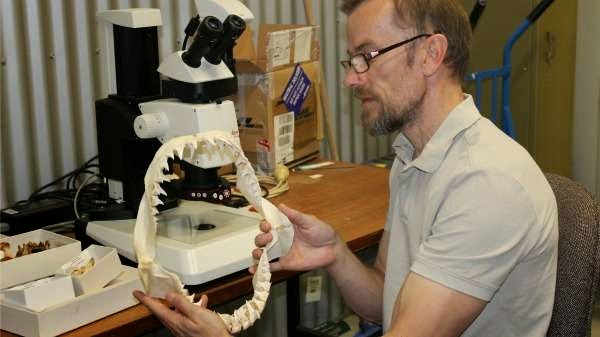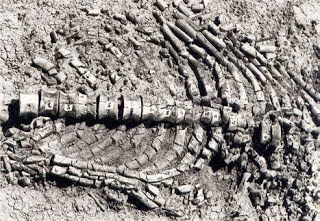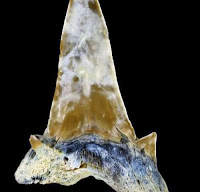
As an undergraduate student of geology I had become fascinated by palaeontology—in particular the study of marine vertebrate fossils from the Cretaceous period (145-66 million years ago).
Together with a fellow student I saved up enough money to travel to the USA in search of fossils.
One day we were prospecting a 75 million-year-old floodplain and shallow marine sediments, exposed in spectacularly scenic badland areas of north central Montana.
I was busy dry sieving a lens of marginal marine sand full of perfectly preserved shark teeth when my friend stumbled across an articulated but headless skeleton of a long-necked plesiosaur lying on its back in estuarine mud.
As we began marking the vertebrae I noticed deep bite marks on one of the leg bones.
Further excavation revealed a few teeth of a large individual of the apex predatory shark Archaeolamna kopingensis.
Sharks may lose teeth as they bite into tough prey and a plesiosaur’s torso was built like a tank.
The discovery and excavation of the plesiosaur skeleton and the dramatic story it reveals, with a shark probably weighing several hundred kilograms tearing at its limbs, cemented my desire as a young student to pursue a career in palaeontology.

In August 2011 a field party from the WA Museum came across another Cretaceous ‘crime scene’: this time in the Giralia Range, southeast of Exmouth where marine rocks of Early Cretaceous age are well-exposed.
One of the volunteers discovered a few bones lying near the top of a small hill of the Gearle Siltstone, which is approximately 108-107 million years old in this particular area.
The bones looked so well-preserved he initially thought they must have belonged to a modern animal like a sheep or a goat.
I was, however, able to determine that they were in fact of Cretaceous age and belonged to an extinct, dolphin-like marine reptile called an ichthyosaur.
The most complete bone discovered is a surangular bone that, together with several additional bones, makes up the lower jaw in these reptiles.
Upon closer examination I noticed that the incomplete front part of the bone had been nearly completely sheared off at an angle.
Another jaw fragment of the same ichthyosaur has multiple, parallel bite marks probably produced by smaller sharks.

All but one of the shark species co-occurring with ichthyosaurs in the Giralia Range were either small or very rare.
A distant relative of the white shark, belonging in the extinct genus Dwardius, was however both common and large enough to potentially prey on ichthyosaurs.
Its fossilised teeth have been found in England, France and now also in Western Australia.
The ‘detective’ aspect of vertebrate palaeontology, looking for clues on the bones, is an incredibly exciting field of research.
In some cases palaeontologists have found direct evidence of predatory behaviour with tooth-fragments of the predator imbedded in healed bone tissue.
Note : The above story is based on materials provided by Science Network WA.










